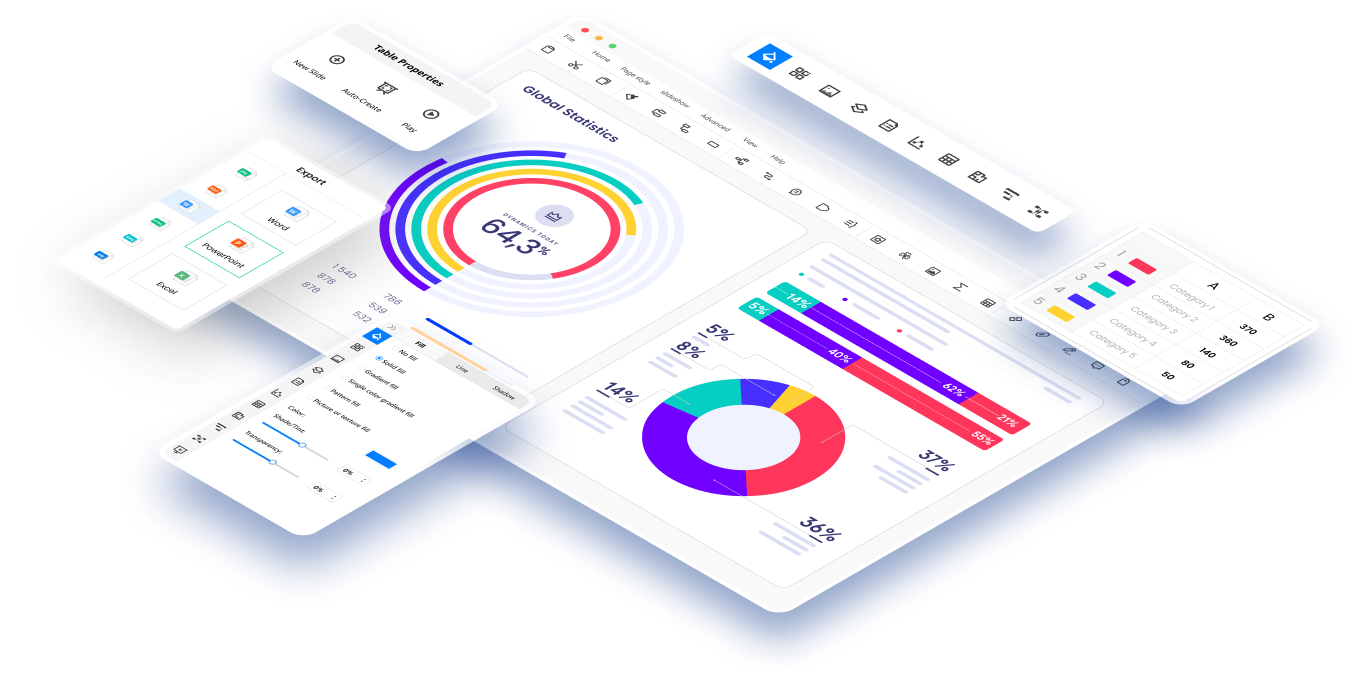Risk Management Framework (RMF) is a structured approach to identify, assess, treat, monitor, and report risks encountered by organizations. It involves a comprehensive risk mitigation plan that outlines strategies to minimize or eliminate identified risks. The five components of RMF include risk identification, measurement, mitigation, reporting and monitoring, and governance.
In this article
Part 1. What is a Risk Management Framework (RMF)?
Risk Management Framework (RMF) can be defined as a structured and systematic approach to identify, assess, treat, monitor, and report risks encountered by organizations. RMF provides a framework for organizations to establish effective risk management processes.
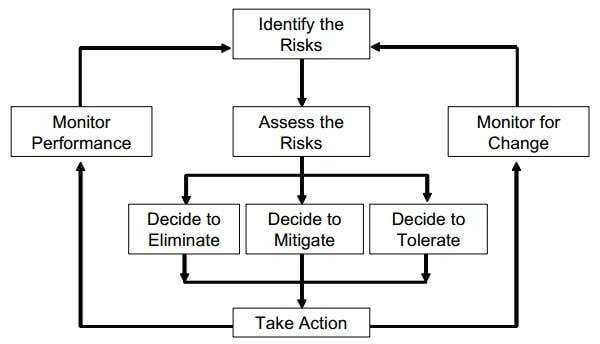
Part 2. The 5 Components of RMF
A risk mitigation plan is an essential component of RMF, as it outlines the strategies and actions to be taken to minimize or eliminate identified risks. It involves identifying potential risks, analyzing their potential impact, and devising measures to avoid, reduce, transfer, or accept these risks.
A framework for risk management can be divided into five parts. All of these components are important in the risk management process.
1. Risk Identification: The first component of RMF is risk identification, which involves identifying and documenting potential risks that may hinder the achievement of organizational objectives.
2. Risk Measurement: Risk measurement entails evaluating the probability and potential impact of identified risks.
3. Risk Mitigation: Risk mitigationforms the heart of the RMF, as it encompasses the strategies and actions implemented to reduce or eliminate identified risks.
4. Risk Reporting and Monitoring: Once risks have been identified and mitigation measures implemented, it is crucial to continuously monitor and report on the status of these risks.
5. Risk Governance: The final component of RMF is risk governance, which focuses on establishing a robust organizational structure, policies, and procedures to support effective risk management.
Part 3. What are the Four Types of Risk Mitigation?
The types of risk mitigation strategies can be broadly classified into four categories. All of these categories have their distinctive properties.
1. Avoidance:This strategy aims to eliminate the possibility of risks by taking preventive measures, such as discontinuing certain activities or avoiding high-risk situations altogether.
2. Reduction:Risk reduction involves implementing measures to decrease the probability or impact of identified risks. This could include enhancing security measures, diversification, or implementing backup systems.
3. Transfer:Risk transfer involves shifting the potential negative consequences of risks to other parties, often through insurance, contracts, or outsourcing certain activities, thereby transferring the responsibility to manage the risk to a third party.
4. Acceptance:In some instances, organizations may choose to accept certain risks if the associated costs of mitigation outweigh the potential impact. Acceptance does not imply negligence but rather a conscious decision based on careful evaluation and risk appetite.
A risk management and risk mitigation framework has some essential steps. To systematically manage risks, these steps should be followed.
1. Identify the Risk: In this initial step, risks are identified by conducting thorough risk assessments, engaging with relevant stakeholders, and analyzing historical data and industry trends.
2. Assess the Risk: Risk assessment entails analyzing the identified risks in terms of their probability and potential impact and prioritizing them based on their significance.
3. Treat the Risk: Once risks are assessed, appropriate risk mitigation processstrategies are formulated to treat, reduce, or eliminate the identified risks.
4. Monitor and Report on the Risk: Regular monitoring and reporting on the risk are crucial to ensure the effectiveness of risk mitigation strategies.
A security risk mitigation plan specifically focuses on identifying and addressing security risks that organizations may face. It outlines the measures and strategies to proactively mitigate potential security threats, ensuring the confidentiality, integrity, and availability of sensitive information and systems.
Part 4. Make a Risk Management Framework Chart with Edrawmax
Wondershare EdrawMax is an excellent tool to use when creating a risk management framework chart. It is user-friendly, allowing users to quickly and easily create professional-looking charts with its drag-and-drop interface. Here are the steps to create a risk management framework chart using the tool:
Step 1: Sign in to your EdrawMax account first. This has to be done before you can begin making the chart.
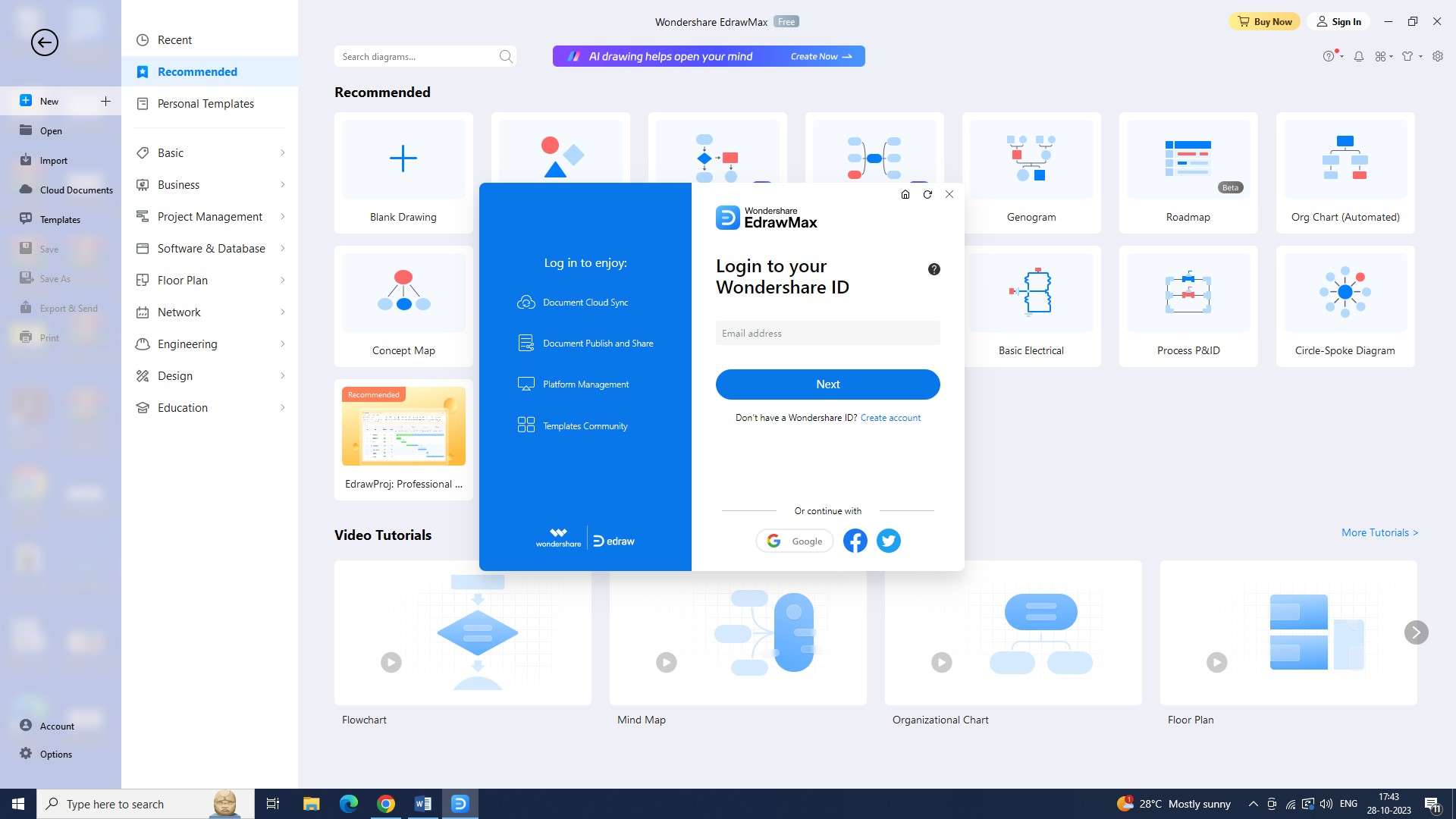
Step 2: A new document must now be opened. Simply use the shortcut key "Ctrl+N" or click the plus sign to the right of the interface's "New" button to do this.
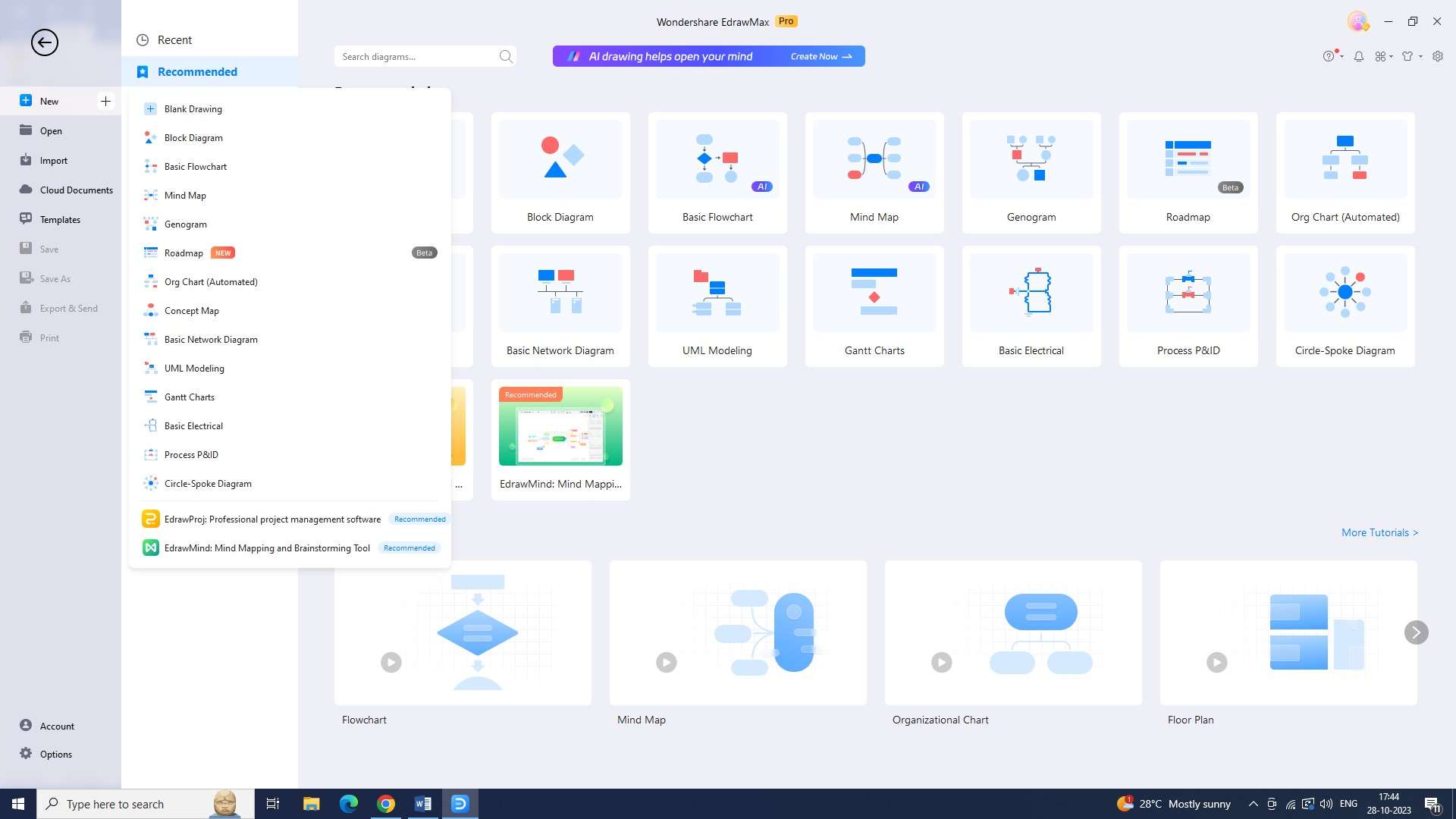
Step 3: Look for a risk management framework chart template under the "Templates" section. There will be a large selection of templates available for you to pick from, so you may choose which one you like best.
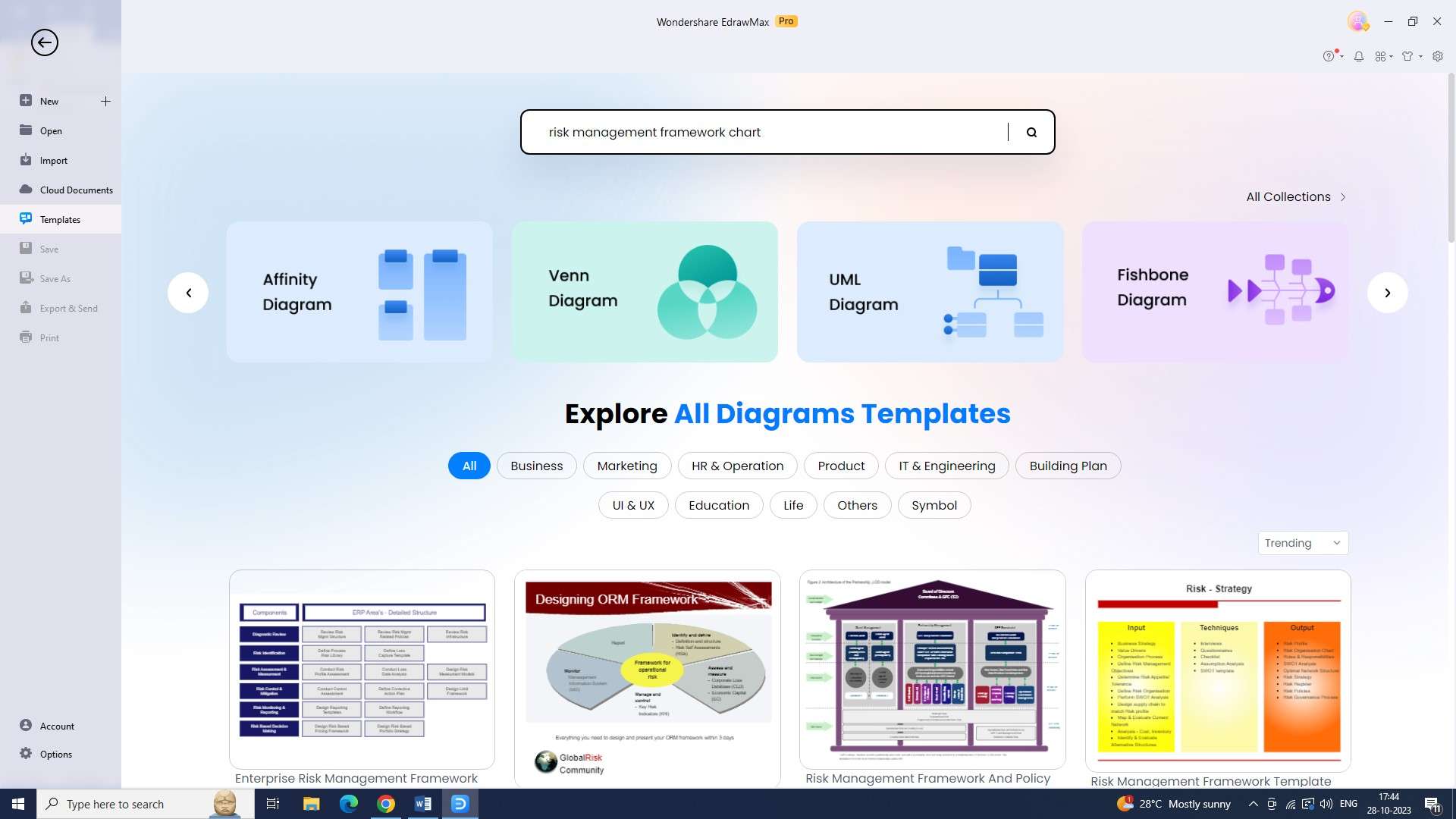
Step 4: At this point, you can begin modifying the template. This entails customizing the design, color palette, and other elements.
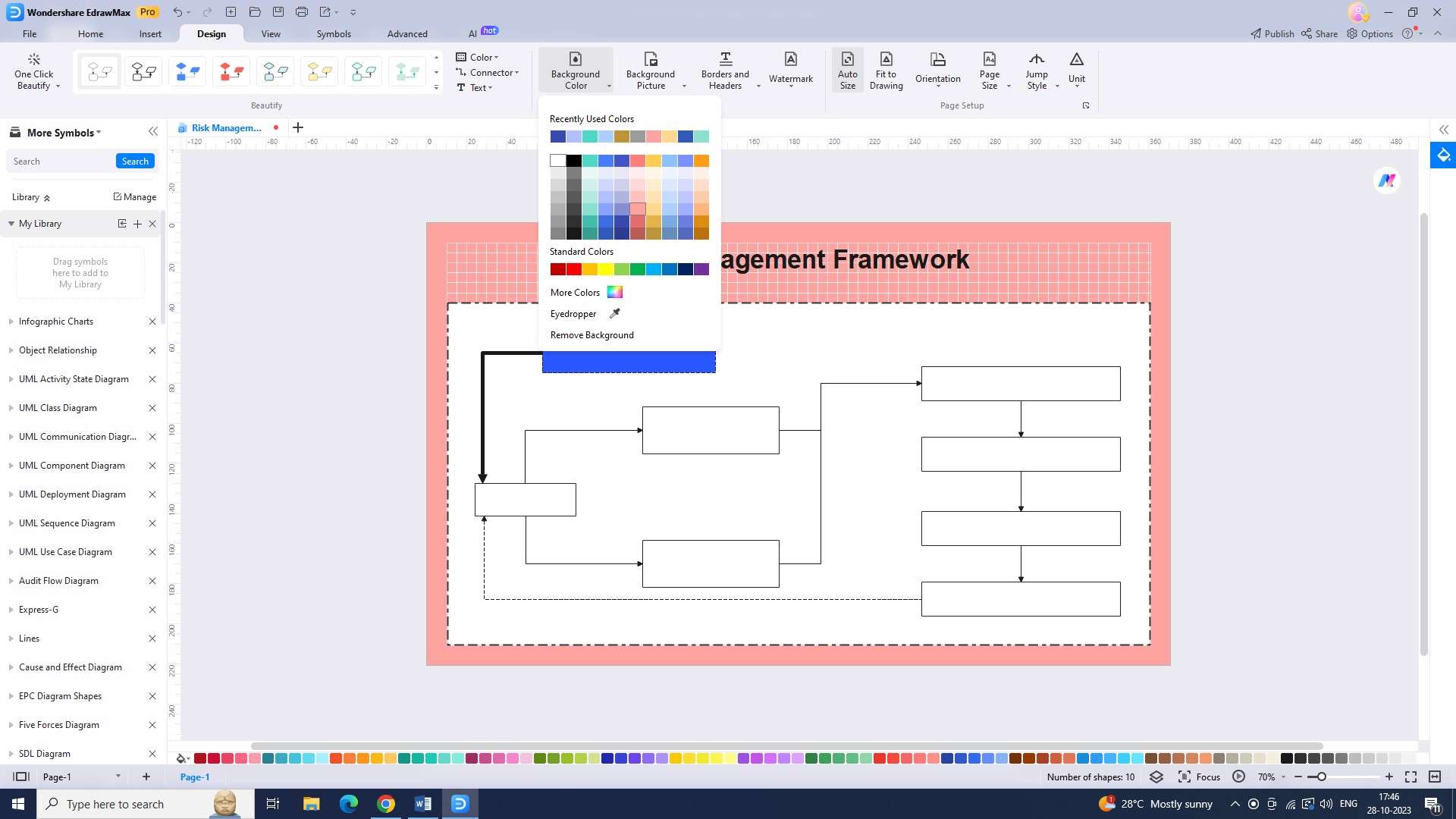
Step 5: Adding your data is the next step. Fill up the chart with appropriate data so that it may be seen on the final risk management framework chart.
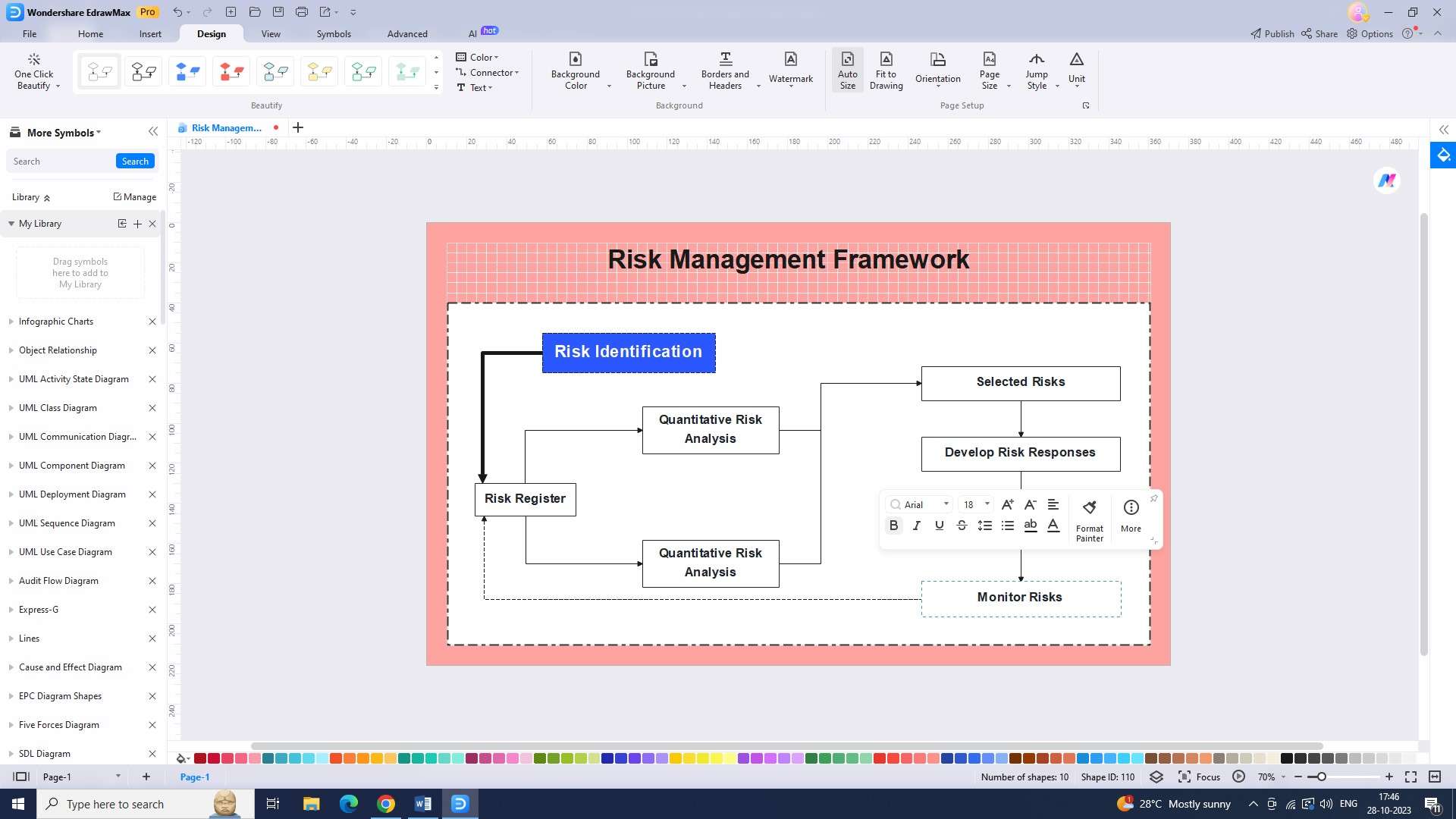
Step 6: Remember to save your chart before you're finished. Just select "Save" from the "File" menu to accomplish this.
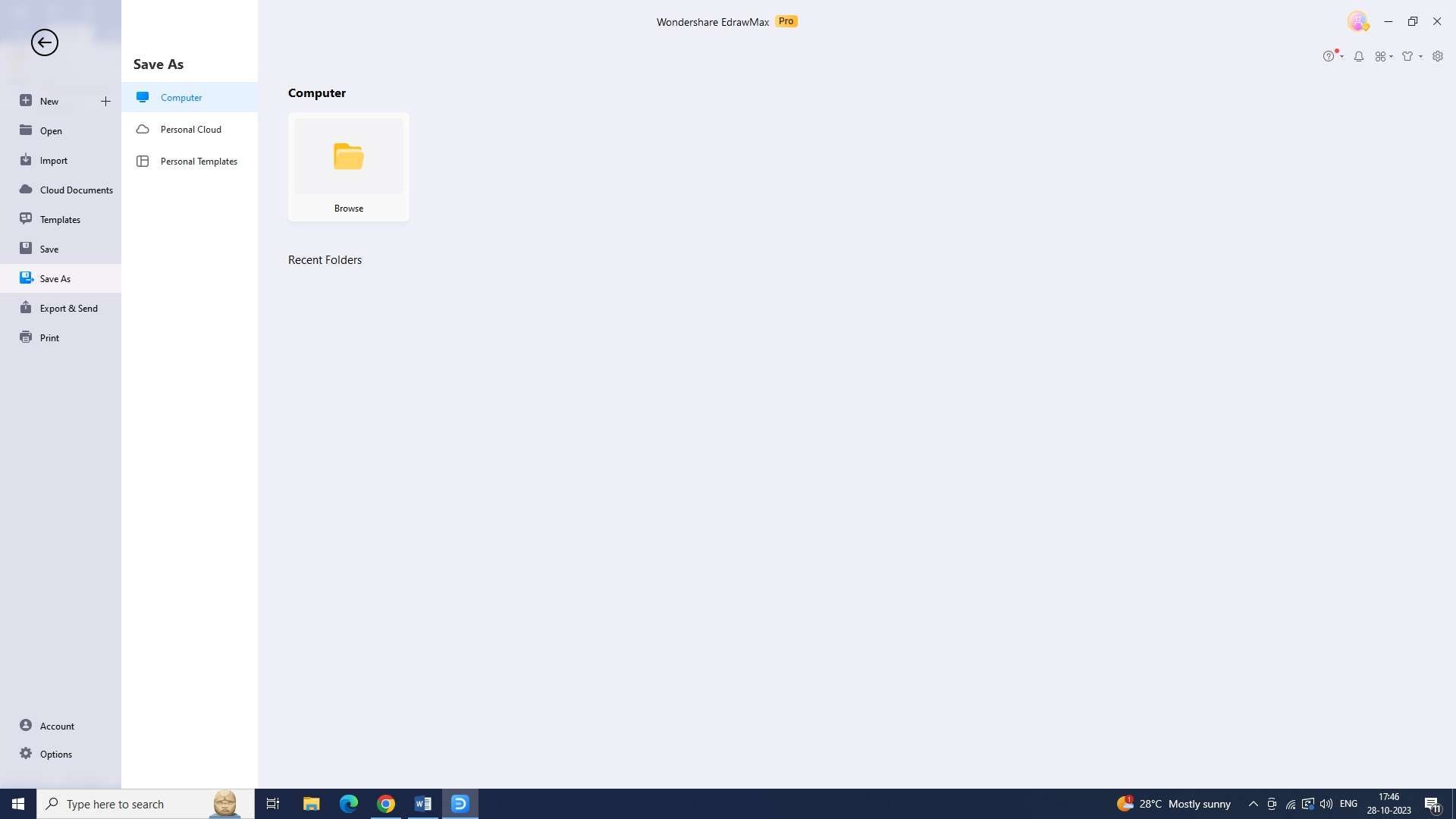
Step 7: Select "Export" after going to "File." There will be several format options available for you to export the chart.
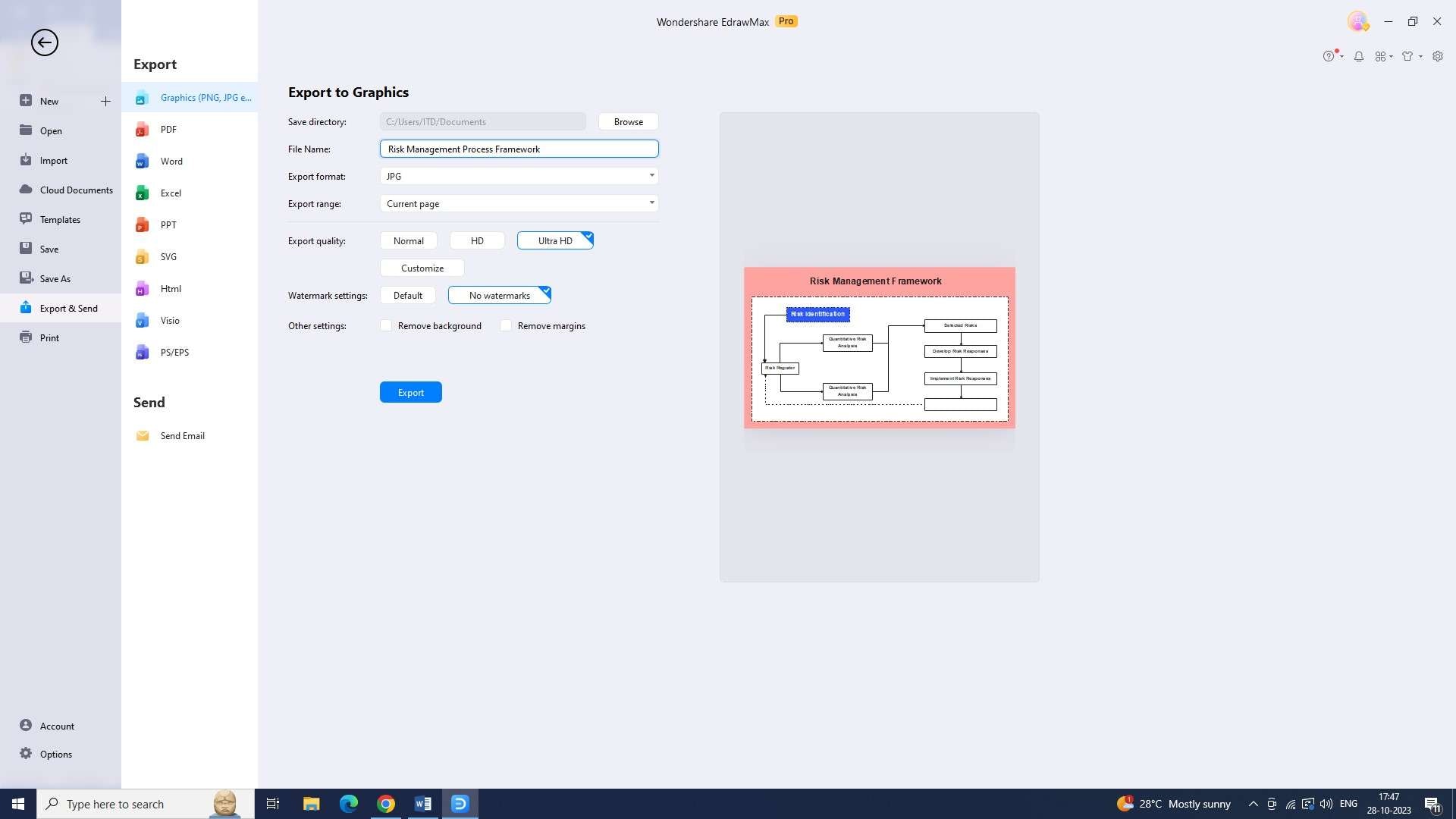
The Bottom Line
RMF provides organizations with a systematic process to effectively manage risks and allocate resources. A plan for risk mitigation plays a crucial role in identifying and addressing potential risks, while the four types of risk mitigation strategies offer different approaches to managing risks.

